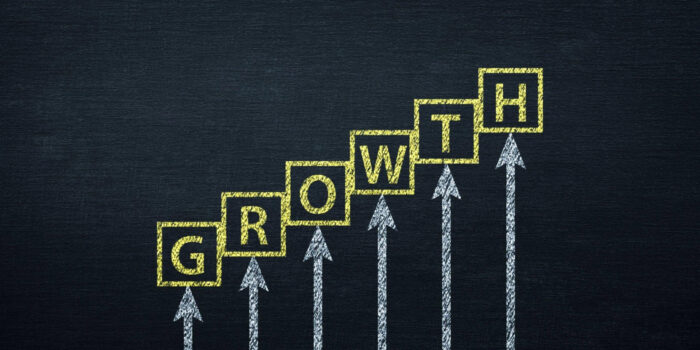In this era of stupendous globalization, Asia is believed to be leading the pack and is forecasted to represent the top 50 percent of global GDP by the year 2040. As the global share of consumption increases in the region, the necessity and growing sentiment for encouraging sustainable practices is seen more than ever before. Major economies in the region are readily working toward integrating sustainable practices by strategically framing business ethics, and policies and henceforth, driving a demand.
With the given trend of global consumption pattern, sustaining it would require the ecological resources of 2.3 planets by 2050. A subset of sustainable practices at large, the concept of the circular economy has been able to capture and turn a few heads, given the unprecedented levels of population growth and consumption seen globally.
The circular economy is a model of production and consumption with a special focus on reduction, reusing, and recycling activities. Currently, there remains a vast gap between the potential and application of a circular economy, accounting for more than $4 trillion in business opportunity and only about 9% of the global economy being circular.
The big players
Accounting for more than a three-fourth share of the Asian economy, the top 5 economies of China followed by Japan, India, South Korea, and Indonesia have envisioned plans for adopting the circular economy model.
Enunciating innovation in key industries like petrochemicals, China has laid out a 5-year circular economy plan to be achieved by 2025. Making it the 14th Five-Year Plan for Circular Economy Development, the manufacturing hub of the world, has envisioned slashing the consumption of essential resources like energy and water per unit GDP by an average of 14%. Comprehensive utilization of waste is at the core of the plan, showing a significant increase in utilization levels from that of 2020.
- Japan is focusing on increasing the size of its circular economy to surpass $580 billion by 2030. Initiatives taken up essentially include recycling raw materials and distributing used goods, attempting at reducing carbon emissions levels. Striking a balance between business and government initiatives, the Ministry of the Environment, Japan (MOEJ) and Keidanren (Japan Business Federation) signed a partnership agreement in 2021.
- India has proactively envisioned several policies and programs to realize the potential of circular. With 11 committees concerned with 11 focus areas of “end-of-life products/recyclable materials/wastes”, the plans laid out are highly driven and enterprising in deploying stringent protocols to drive development.
- Realizing the additional economy-wide GDP generation of nearly $40 billion, Indonesia launched a circular economy initiative in partnership with UNDP and Denmark. Becoming the first Southeast Asian country to develop a maiden national strategy for a circular economy ecosystem, Indonesia has embarked on the mission to implement resource and waste reduction targets by 2024.
- South Korea is fueling its efforts toward transitioning from high dependence on fossil fuels to renewable energy. It aims at increasing its share of renewable energy in the energy sector by 20% by 2030
Despite individual country efforts fueled to drive the adaptability of a circular economy, regional policies and initiatives are considerably limited. Even though several platforms are operating in the region to develop and share good practices of sustainability, there is a lack of a platform to harmonize and facilitate regional efforts.

Investments
The venture capital industry has shifted its focus area in recent years. Trends are suggestive of ‘impact funding’ amongst investors for this region. A major proportion of investors in line with the UN’s sustainable development goals (SDGs) or environmental, social, and governance (ESG) targets are heavily pouring investments into innovative startups across the region. Since 2010, foreign direct investment is readily showing an upward trajectory.
Consumer insights
Home to the world’s two largest consumer countries, consumer insights are a major contributor to how circular economic transition is envisioned in the region. Kantar’s Asia Sustainability Foundational Study found that 58% of Asian consumers are acknowledging the ill effects of unsustainable practices leading to environmental depreciation. More than 60% of consumers in the region believe that businesses have the responsibility to ensure that their supply chains do not harm the environment. Sustainability is seen to be driving consumer choices in the Asian market, accounting for up to more than half of consumers dissociating from brands imparting a negative impact on the environment. Google search analytics has shown Google searches for ESG terms increased more than 20-fold in South Korea and more than 30-fold in Indonesia over the past five years. Even though there exists a momentum shift among consumers in the region to consider brands with better sustainability practices, there remains a huge ‘say-do-gap’.
Asia is making slow and steady progress in its transition toward ensuring a circular economy. As the demand and consumption, levels are drastically increasing, making the conscious move to envision a plan for the demand-supply chain is the need of the hour. With a holistic approach of intertwining business stakeholders, policymakers, and regional collaboration, Asia is set to the emerging markets in the region and is moving towards building a much more resilient structure.
Source: Accenture, Deloitte, McKinsey, Bain & Company, Asian Development Bank Institute, Business Time, World Economic Forum





 Market Research
Market Research Consumer Research
Consumer Research Industry Research
Industry Research Market Entry Strategy
Market Entry Strategy Feasibility Studies
Feasibility Studies Product Research
Product Research Automobile & Mobility
Automobile & Mobility Banking and Finance
Banking and Finance Consumer Products & FMCG
Consumer Products & FMCG Ecommerce & Retail
Ecommerce & Retail Industry & Manufacturing
Industry & Manufacturing Government & Public Sector
Government & Public Sector Industry Associations
Industry Associations Technology & Software
Technology & Software Venture Capital & PE
Venture Capital & PE Consulting & Advisory
Consulting & Advisory India Entry Market Research
India Entry Market Research Innovation Consulting
Innovation Consulting KX Market Radar
KX Market Radar Business Model Development
Business Model Development Gen Z Navigator
Gen Z Navigator